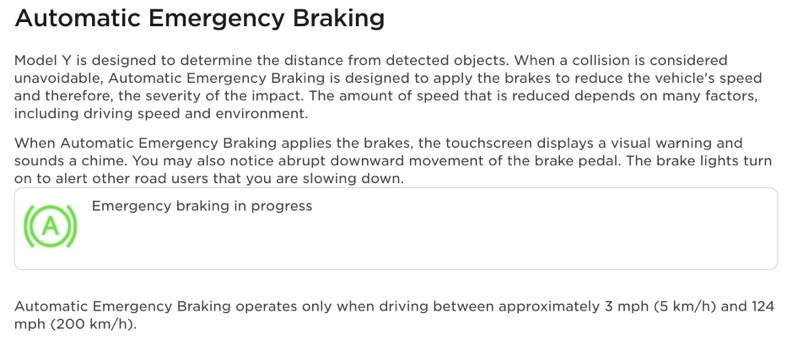
Tesla Improves Automatic Emergency Braking in 2023.12 Update

Tesla has updated its owner’s manual to reflect significant changes to its Automatic Emergency Braking (AEB) system in the latest 2023.12 software update.
Previously, AEB was described as being designed to reduce the impact of frontal collisions only. However, the updated manual now explains that AEB is intended to reduce the impact of both frontal and reverse collisions, with limited functionality while in reverse, according to changes spotted by a Not a Tesla App reader.
The updated AEB system is designed to determine the distance from detected objects, not just those in front of the vehicle, and will apply the brakes to reduce the vehicle’s speed and the severity of the impact when a collision is considered unavoidable. The new system operates between approximately 3 mph (5 km/h) and 124 mph (200 km/h), an increase from the previous maximum speed of 90 mph (150 km/h).
The updated AEB system now also works with “limited functionality” while in reverse, with the feature expected to be available across various regions and outside of Full Self-Driving (FSD) Beta.
The owner’s manual provides additional information on when AEB does not apply the brakes or stops applying them, including when the steering wheel is turned sharply or when the detected vehicle, motorcycle, bicycle, or pedestrian is no longer ahead.
The latest updates to Tesla’s AEB system are in addition to the ones mentioned in the company’s recent 2022 Impact Report, which included the system recognizing perpendicular threats. The manual also clarifies that AEB is always enabled when starting your Tesla.
Tesla’s AEB system works very well and it has saved our bacon a few times. The advantage of over-the-air software updates means safety is continuously getting better with Tesla vehicles.

